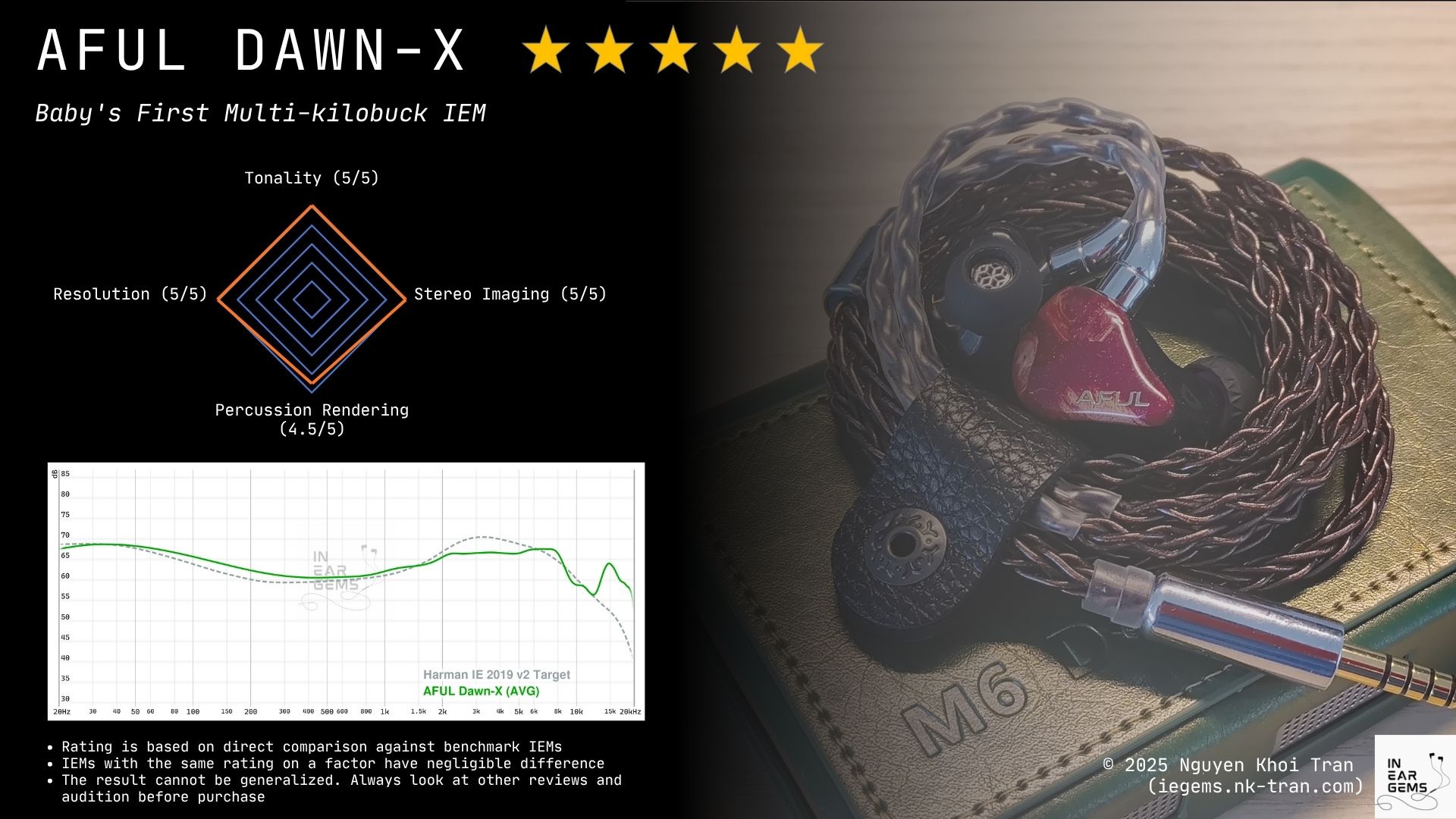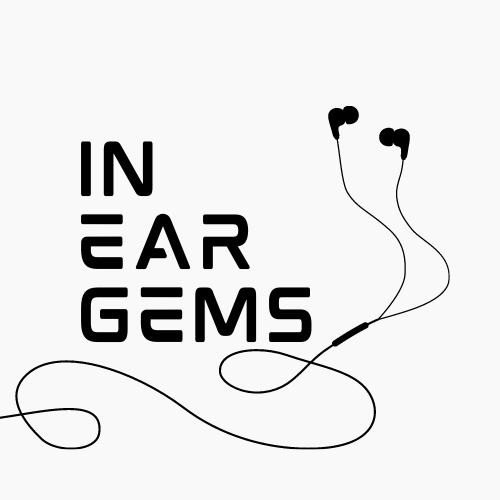DawnX - Baby’s First Multi-Kilobuck IEM
It happens. One way or another, if you are in the IEM hobby long enough, you would be tempted to add a multi-kilobuck class IEM to your collection. When that day comes, how would you choose your first one, especially if you don’t have many opportunity to try before buying?
From the other perspective, if you are an IEM manufacturer who wants to break into the multi-kilobuck market, how would you tune your first offering?
Let’s take a look at the brand new flagship from AFUL and find the answer to our questions along the way.
General Information
DawnX is the current flagship IEM of the Chinese manufacturer AFUL. It’s a quadbrid IEM with a 1DD+8BA+4EST+1BCD topology, totalling 14 drivers each side.
AFUL’s expertise in 3D printing and crossover design makes a comeback with DawnX, as expected. This time, they push the crossover design of this 14-driver quadbrid monster to a full 6-way electronic, 6-way physical. Last time with Cantor, their previous 14 BA driver flagship, the design was 5-way physical. More ways usually means the engineers can exert finer control over the tuning, and eash driver can be more dedicated to the frequency range they work the best, both of which generally lead to higher technical performance.
The “high-damping air pressure balance system” debut with AFUL Performer 8 IEM is also back. I can hear similar characteristics in the bass quality, particularly the sense of resonance of bass notes, and nuances and texture in the bass response. However, DawnX has more satisfying amount of bass. So, in this sense, I would say this technology has also been evolved. Good to see.
What’s new with AFUL this time is the EST driver. In particular, how they use the EST. DawnX is equipped with 4 Sonion EST drivers, which is a bit of a rare choice since others in this price range tend to use 2EST instead. I guess 4EST driver is necessary as AFUL use these drivers to cover the treble region all the way from 5kHz up, rather than running EST only for ultra high frequency. As a result, you can hear more influence of the EST on the sound of the IEM, rather than reserving IEM for “blink-and-you-miss” special effect of the upper treble.
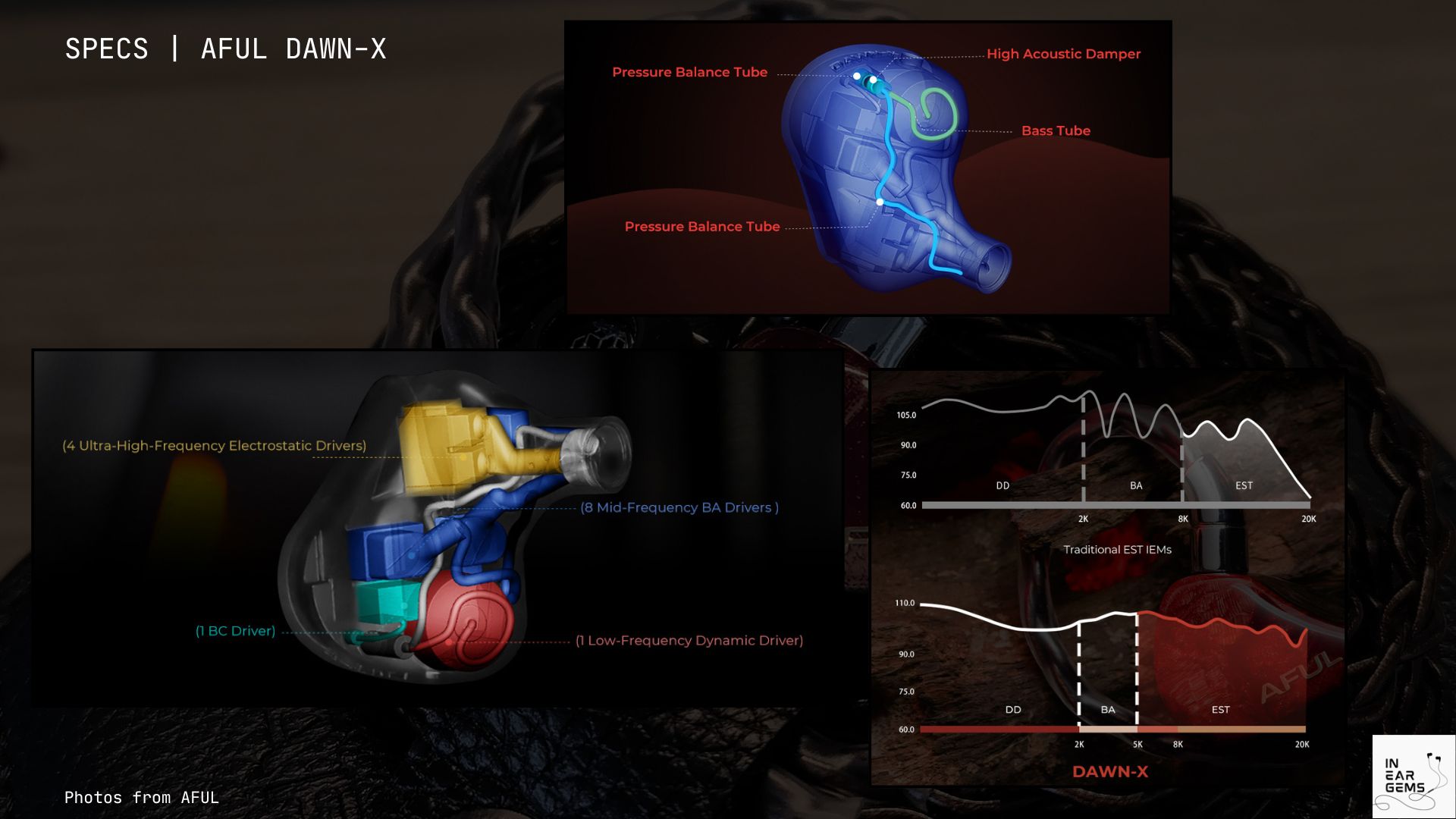
What puzzles me at the moment is the lack of details regarding the BCD. From the schematic, it seems that AFUL uses something similar to the BA-type BCD from Sonion. However, at this point, we have no confirmation in any documentation from AFUL.
Specifications
- Impedance: 15Ω±13%.
- Sensitivity: 101dB@1kHz.
- Frequency Response Range: 5Hz~35kHz.
- Connectors: 0.78mm 2-Pin Connectors.
Packaging and Accessories
The packaging includes the IEM itself, an 8-wire cable, 4 types of ear tips, a faux leather carrying case, a cleaning brush, and paper work.
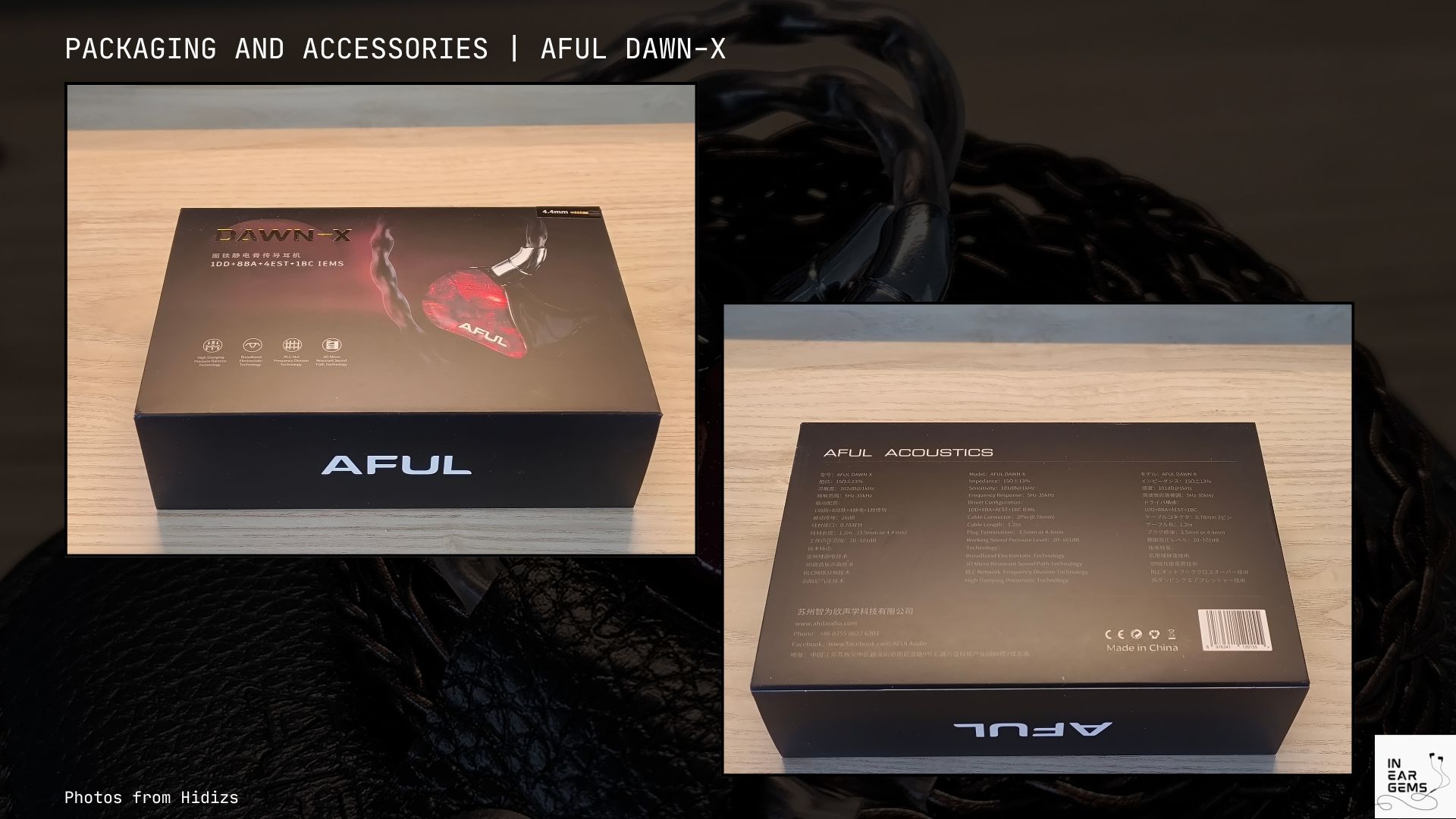
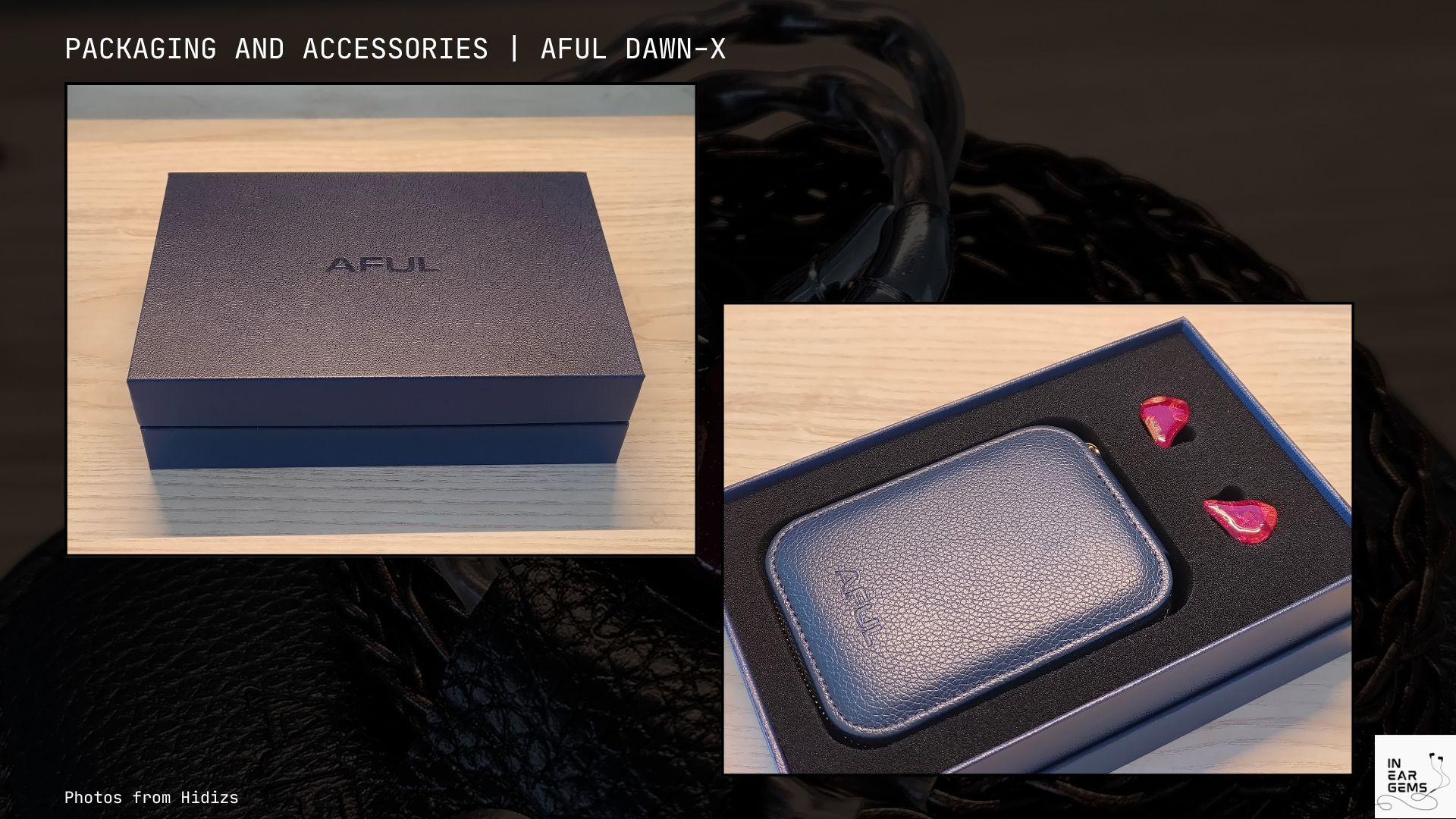
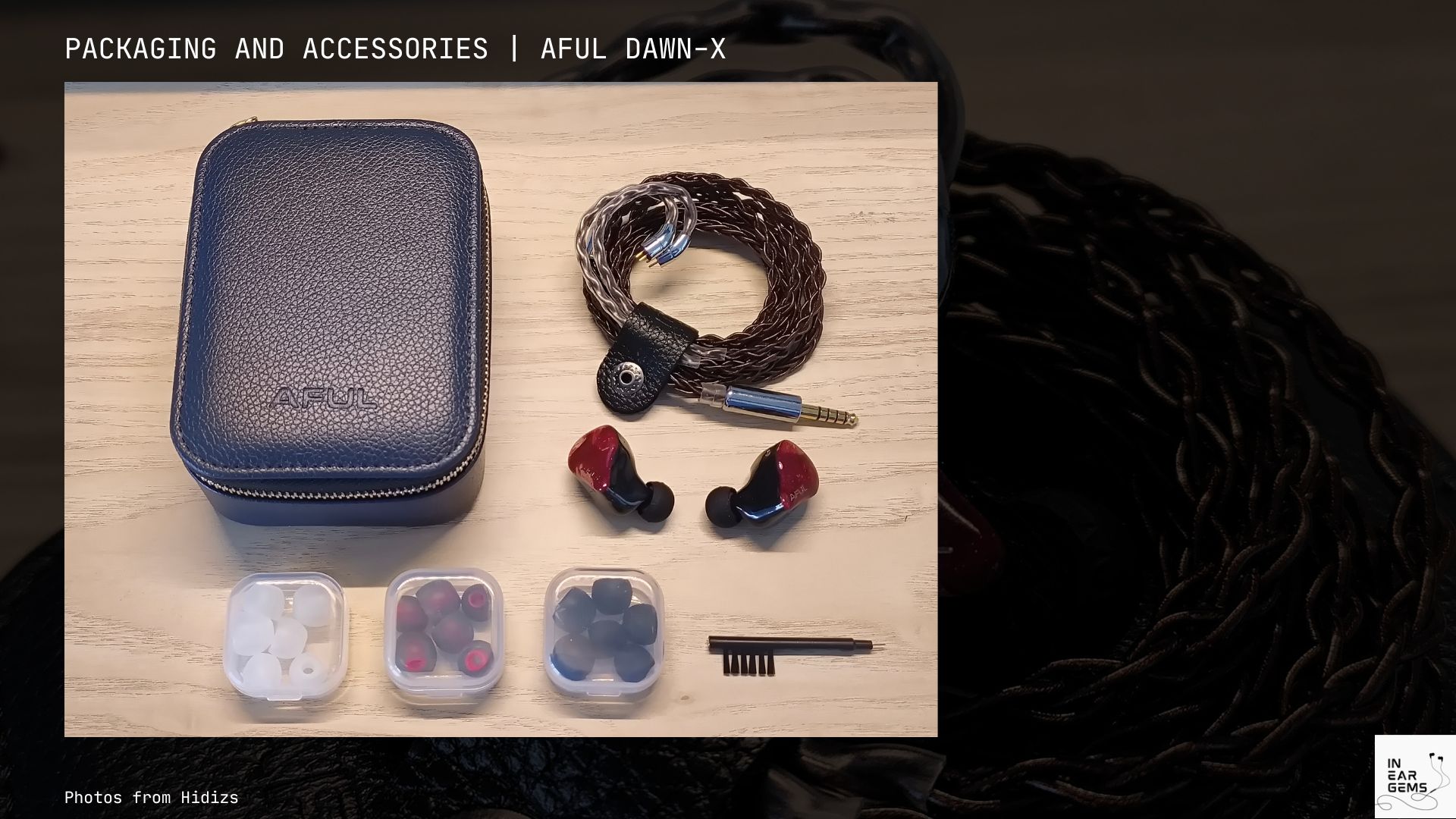
Experience and Sound Quality
I have been using DawnX daily for over a month now. I keep it in my bag alongside my Cantor, using it whenever and wherever needed. Despite the high price, both IEMs have a homely vibe that makes me feel comfortable using them everywhere. They’re tools, not “my preciousssss.”
First, let’s talk about non-sound aspect.
The fit of the DawnX presents a notable challenge for me, coming daily driving previous AFUL IEMs such as Cantor and Performer 5+2. The nozzle of DawnX is quite a bit larger due to the complex internal design with multiple sound tubes. Achieving the correct fit with the IEM resting firmly against the concha of my ears mean I need to be quite particular with ear tips to push these large nozzles to the right depth. For the first time, none of the stock ear tips from AFUL work for me. In the end, I settled for a pair of Eletech Baroque tips. If you get a DawnX, I highly recommend that you get some short ear tips with wide opening.
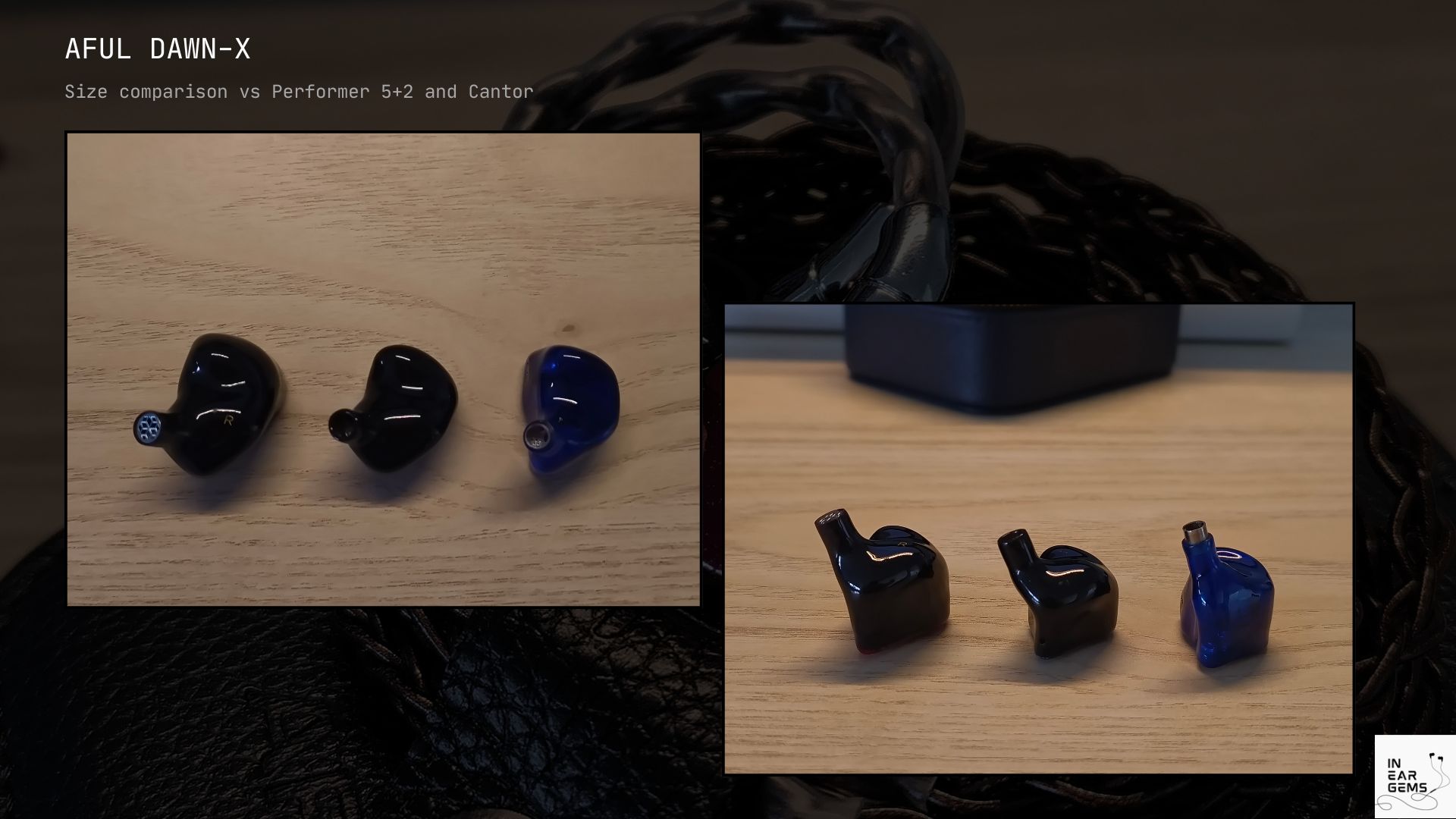
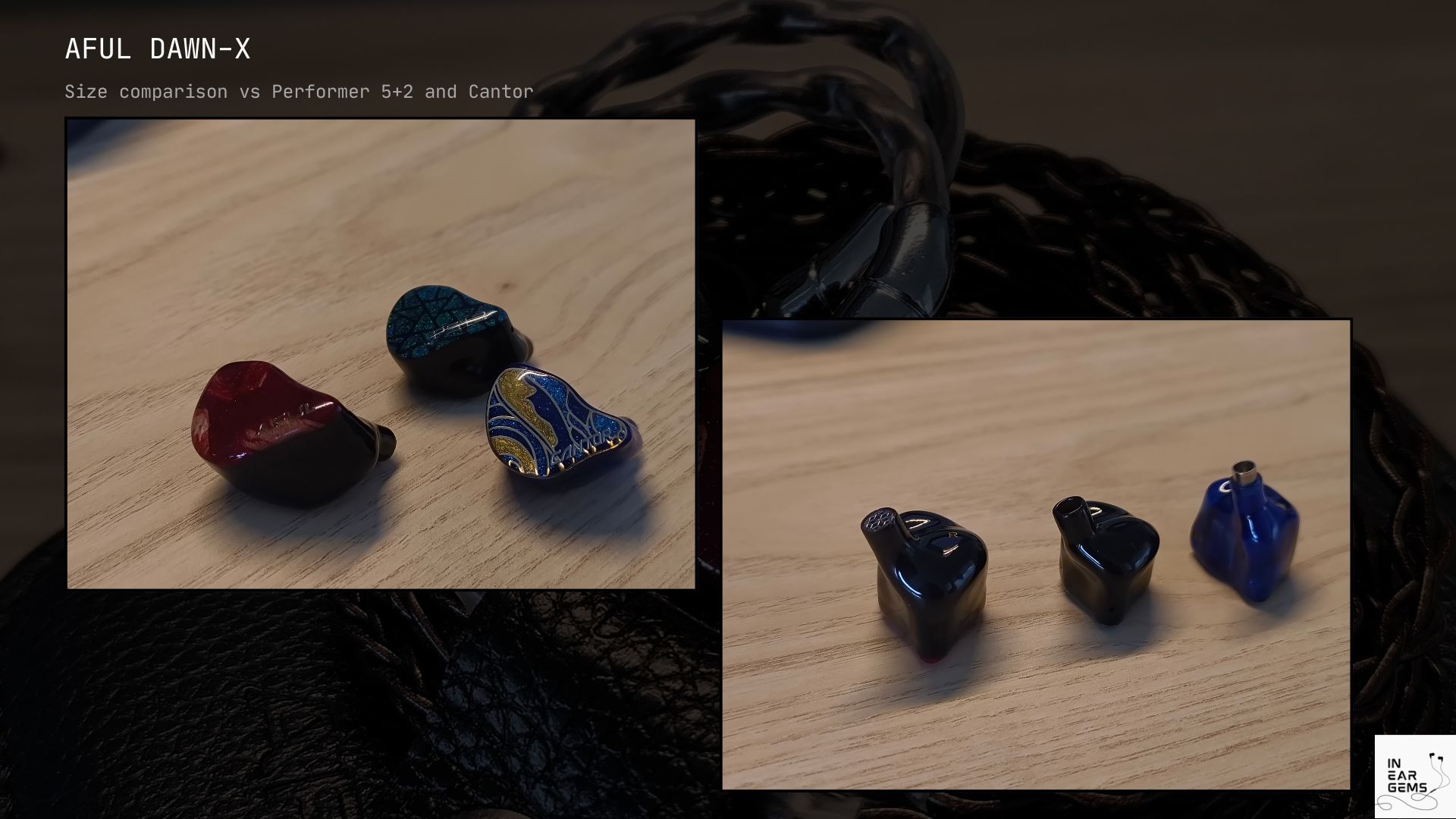
Design-wise, I find DawnX lacking in premium feel compared to recent high-end IEMs in its class like the Spectrumica from IceLabs. The accessories and packaging are also somewhat underwhelming for this class of IEM. While they’re functional, they’re boxed in a generic, space-saving way that doesn’t provide the spectacle one might expect from a high-end product. The accessories are decent quality, but the overall presentation feels uninspired.
Now, let’s talk about sonic experience.
The tonality of the DawnX is exactly what you’d expect from an AFUL IEM: forward midrange that keeps voices from being buried in the mix unless it’s the artist’s design. The midrange tuning is balanced and natural, with a slight warmth that comes from around 1.5dB lift in the lower midrange around 250Hz and a more reserved ear-gain boost topping at around 6dB. This creates a cozy, comfortable listening experience without significant coloration.
The bass is particularly impressive. The bass guitar and drums are excellent with plenty of texture and control without losing the sense of power. The bass notes have a sense of resonance that allows energy to spread out and decay naturally, rather than being compressed or suppressed. This creates a satisfying bass presentation that I find addictive, with clean edges and physical impact that I can feel in my throat or the back of my head.
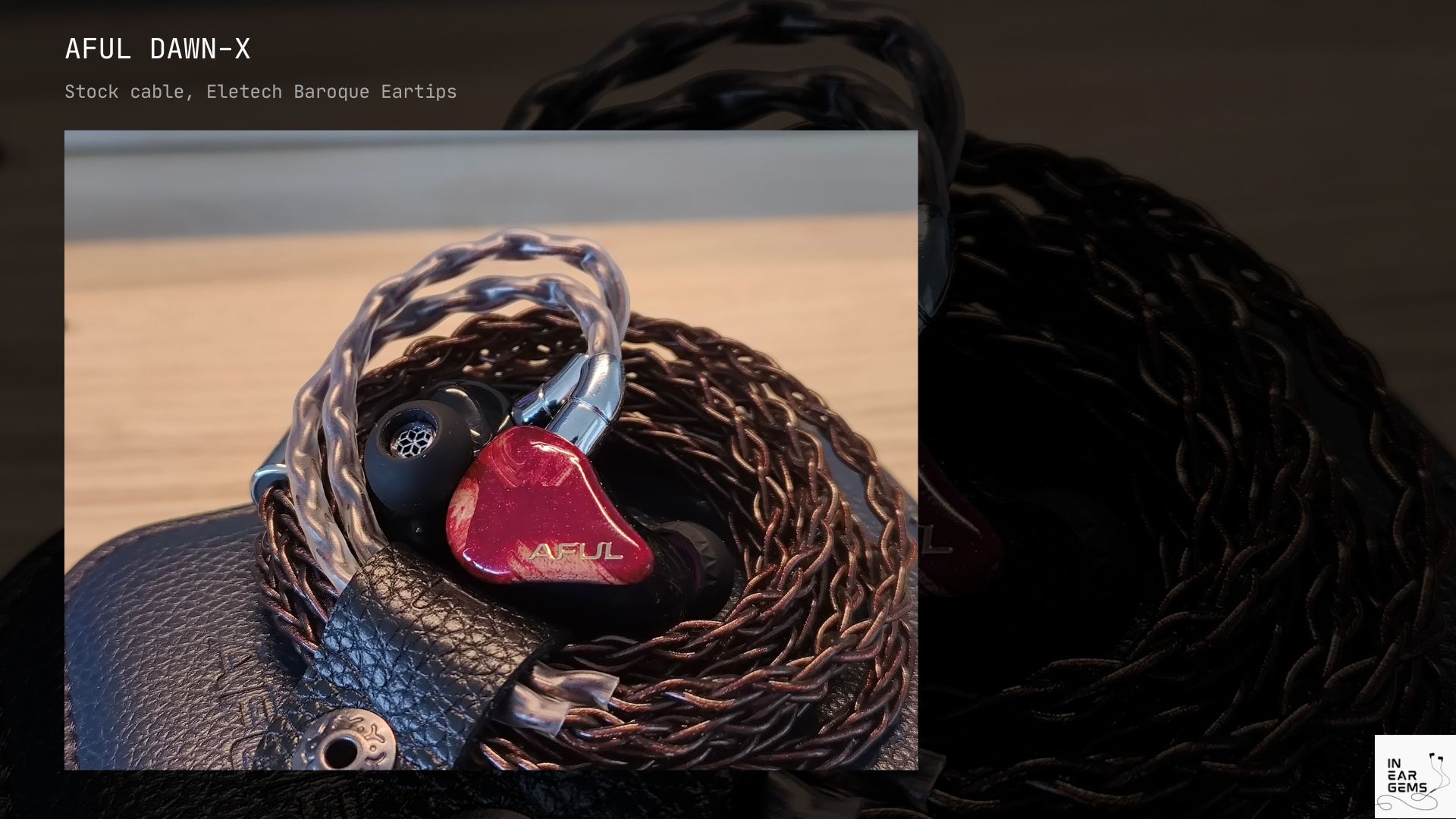
The resolution of the DawnX is effortless and nuanced. It’s quite easy to listen to all parts of recordings, even complex orchestral ones with many elements. Even in busy passages, I can focus on any instrument and still hear nuances and details like the “snap” of violin bow catching the string or the breathy sound of concert flutes.
The soundstage of the DawnX is quite “holographic” with most recordings. The center of the stage is strictly anchored in my head or slightly in front of my eyes, so there has never been the case when the midrange feels distant, a common problem of IEMs tuned to create the illusion of a large soundstage. So, from this angle, you might say DawnX’s soundstage is not that “cavernous”.
However, the “wall” or boundary of the stage feels like it can expand as far as needed into the room, tricking you into thinking that some sounds come from the room itself. This effect is particularly prominent when I listen to music with a distant choral or string section, or music recorded with ambience and reverberation. The EST drivers and good upper treble presence contribute to convincing projection of background elements, making them sound like they come from the surrounding room. The bone conduction driver also creates an uncanny effect where side-channel instruments can appear to float around the ears, as if I can reach out and grab them.
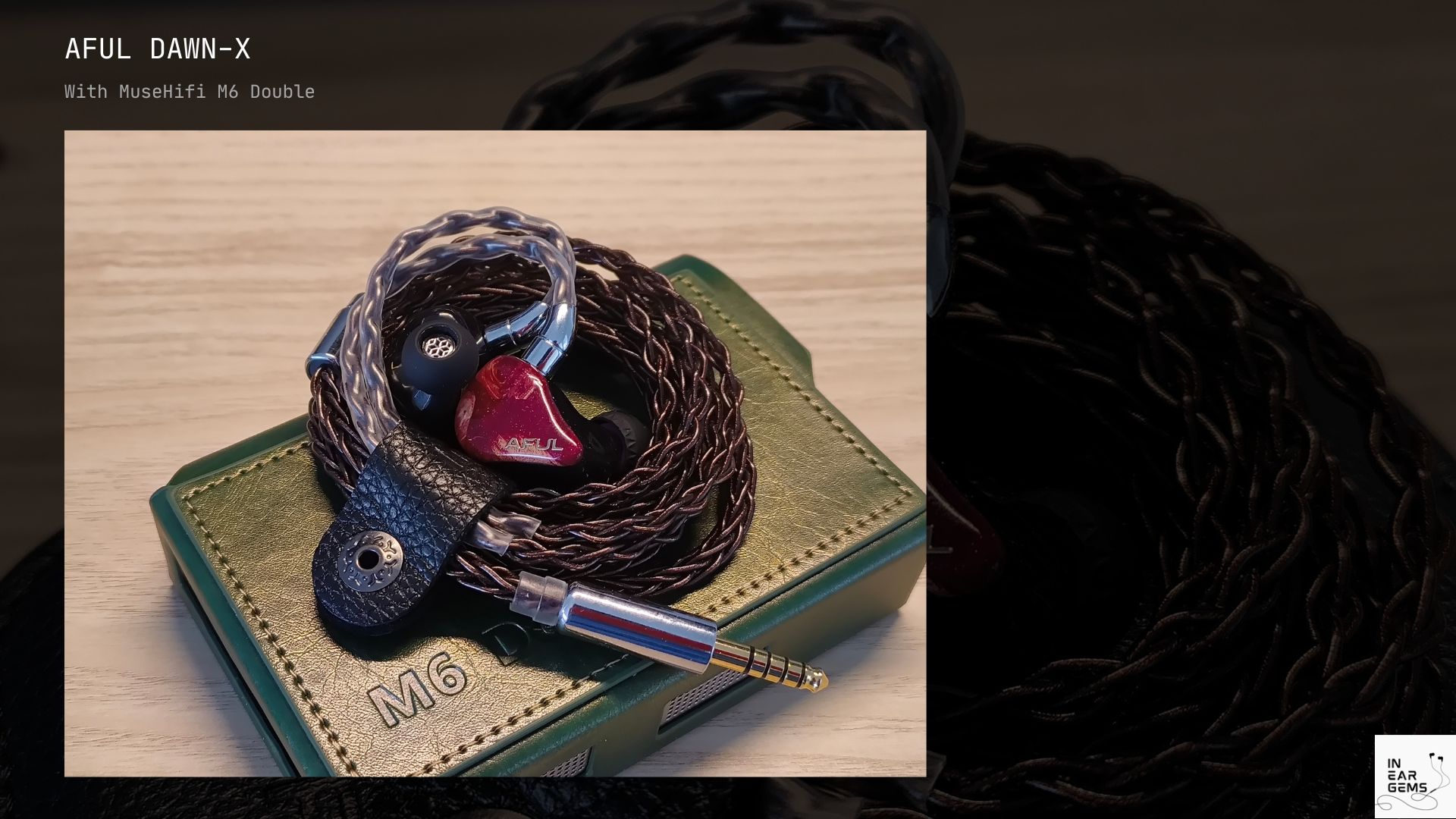
This illusion of soundstage height is very good, with instruments like hi-hats and cymbals positioned slightly above the head in a convincing way.
The combination of tuning, treble, and BCD creates an immersive and impressive listening experience that’s particularly effective with orchestral recordings or any music with complex arrangements.
Detailed Analysis
Tonality
The tonal signature of the DawnX can be described as neutral-warm with moderate bass boost. The midrange tuning is even and balanced, falling within the realm of neutrality. However, it is slightly warmer than a usual neutral-flat midrange tuning due to around 1.5dB lift in the lower midrange around 250Hz and more importantly a more reserved ear-gain boost, topping at only around 6dB. For context, Harman IEMs that sound thin and sharp can boost up to 12.5dB in the same ear gain region. More lower mid and less upper mid means the midrange of DawnX feels somewhat warm and “cozy”, but it’s still in the realm of neutral, not a significantly colored and warm IEM.
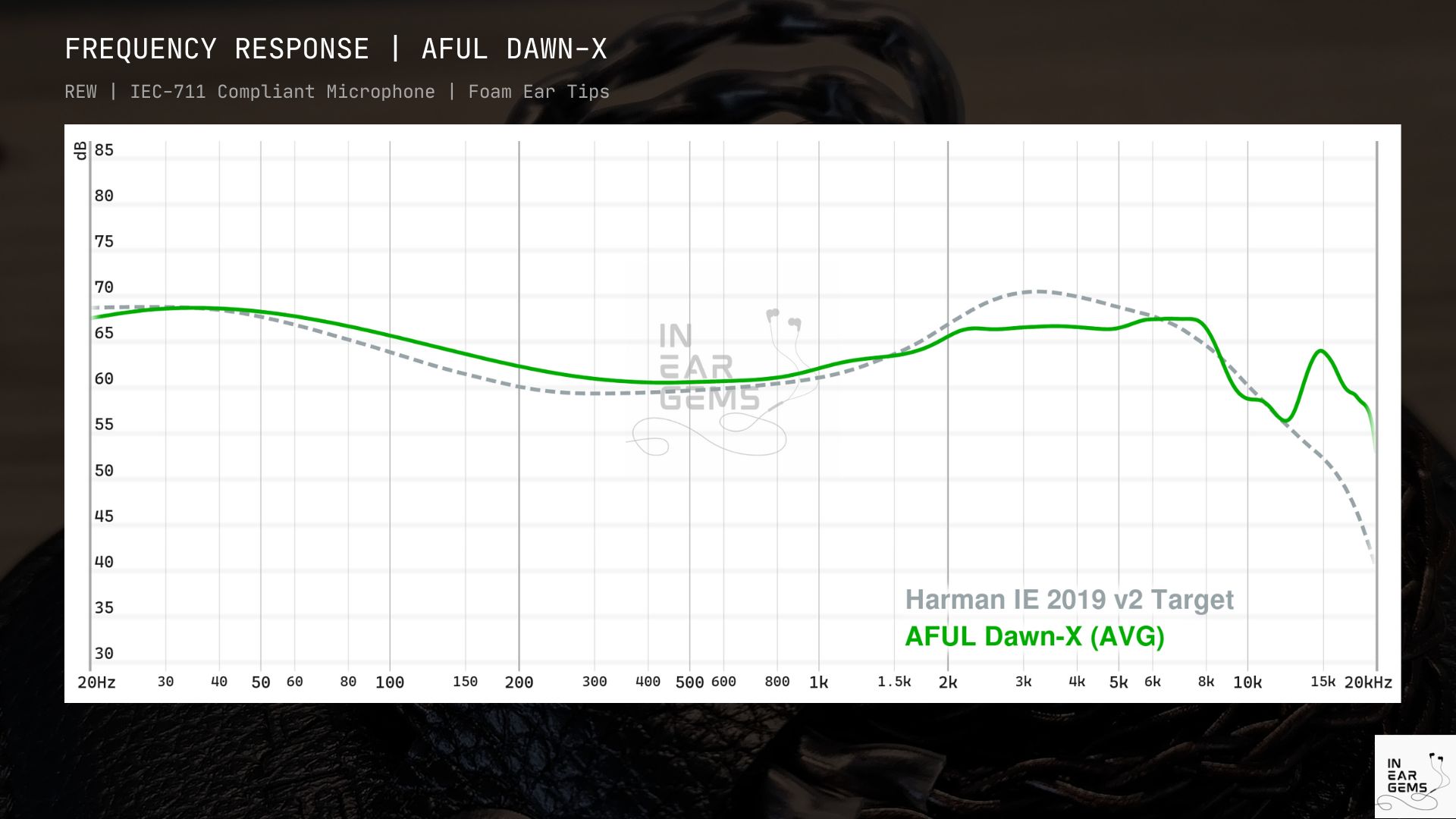
Bass is around 8.5dB above the level of midrange. Because the bass is higher than upper midrange, you would hear more bass in music, thus DawnX can be classified as having a bass boost. However, the bass is still only 8.5dB above midrange, so DawnX is not a “bass monster” or anything like that. There is bass, bass is emphasized, and bass has quite good quality in terms of impact and details, but it’s not an IEM with overwhelming amount of bass.
Treble is present all the way to ultra high frequencies. Therefore, this IEM can have quite precise stereo imaging, the soundstage has great sense of height, micro details are prominent (i.e., all the good bits you expect from IEM with good treble presence). However, the treble is not harsh or piercing or “in your face”. It’s likely that this is the effect of EST drivers. This treble presentation gives this IEM a more “low-key” and relaxing vibe.
Dynamic
The way DawnX presents the bass instruments like bass guitar and drums is quite special, and personally, addictive. A fellow reviewer uses the term “airy” to describe the bass of DawnX, and I think it is a good description. Every bass note of DawnX has a sense of resonance, as if the energy is allowed to spread out and decay naturally until the end rather than being compressed and suppressed.
At the same time, the note attacks of bass instruments have a clean edge and a clear sense of physical impact that I can feel in the throat or the back of my head, depending on the recording. So, all of these factors together creates a satisfying bass presentation. When I give this IEM an epic orchestral score or a recording with good bass line, it can convey the beat and rhythm with full dynamic and engagement factor. So, from this perspective, I think this is an outstanding bass presentation.
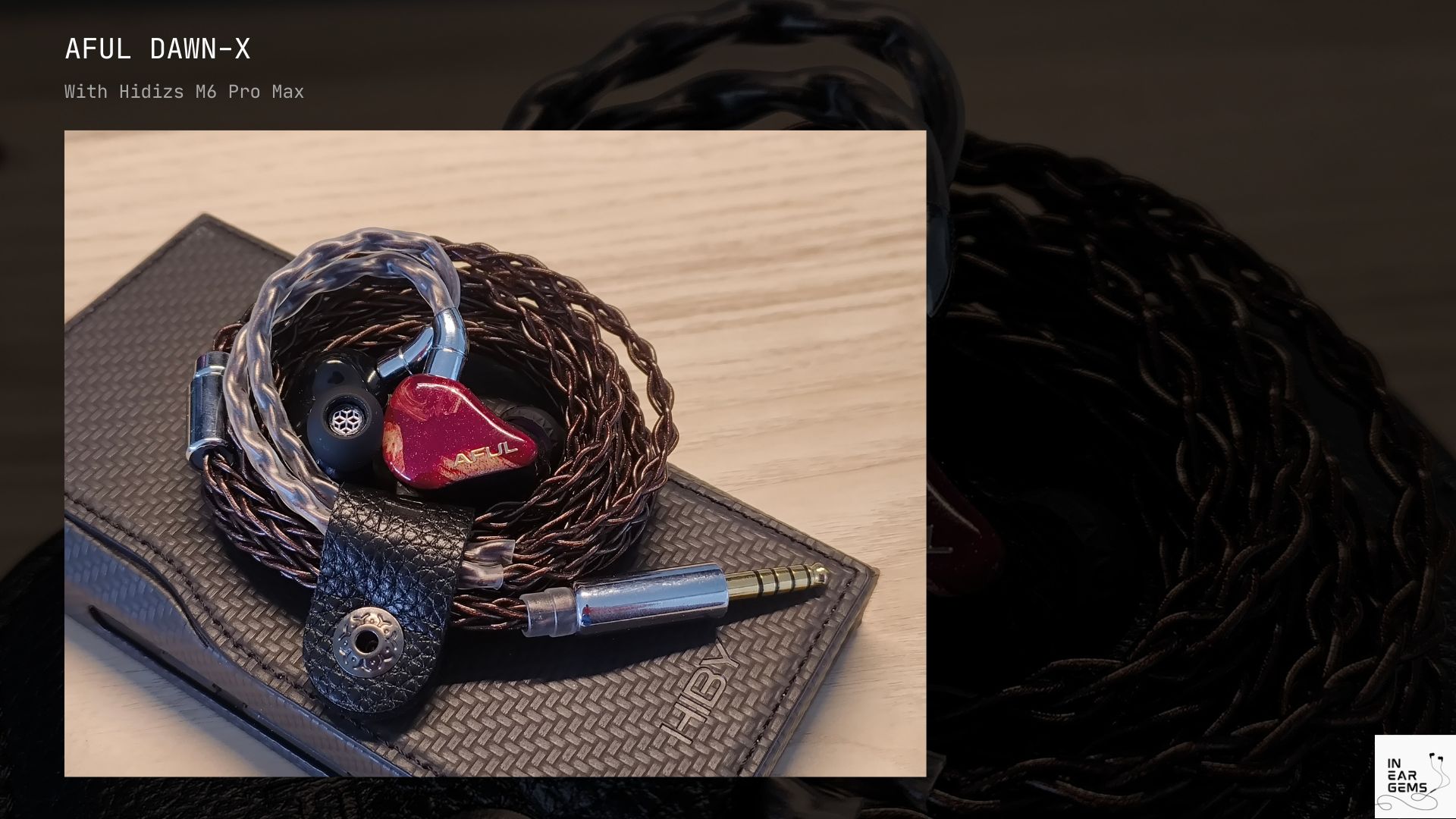
But if you are a “bass head”, it’s worth remembering again that DawnX has only 8.5dB bass boost, so even if the bass is more emphasized in the mix, it does not have the highest amount of bass. Though you can remedy this by turning the volume up a few clicks vs your usual listening (not exaggeratedly so, just a few level higher). The way DawnX tones down and evens out the upper frequencies ensures that it works with higher volume.
In my personal ranking, which emphasizes more on the sense of rhythm and quality of bass note, I would give DawnX a 4.5/5. I took 0.5 off the score because I think AFUL could have pushed this bass a few dB higher to really show case its quality.
Resolution
I would use two terms to describe its resolution: effortless and nuanced. Effortless because it is quite easy for me to listen to all different parts of the recordings, even a busy orchestral one with many elements.
Nuanced because even in those busy passages, if I want to, I can focus on any instrument and still be able to hear the nuances and details, such as the “snap” of violin bow catching the string, or the reed sound of clarinet, or the breathy sound and click clack of valves of concert flutes.
And DawnX achieves all of this resolution whilst maintaining a low-key presentation, never harsh or piercing in the treble.
To put in perspective, the resolution is at a higher level than both my 64 Audio U12T and my AFUL Cantor, the current benchmark for 5/5 level of resolution in my collection.
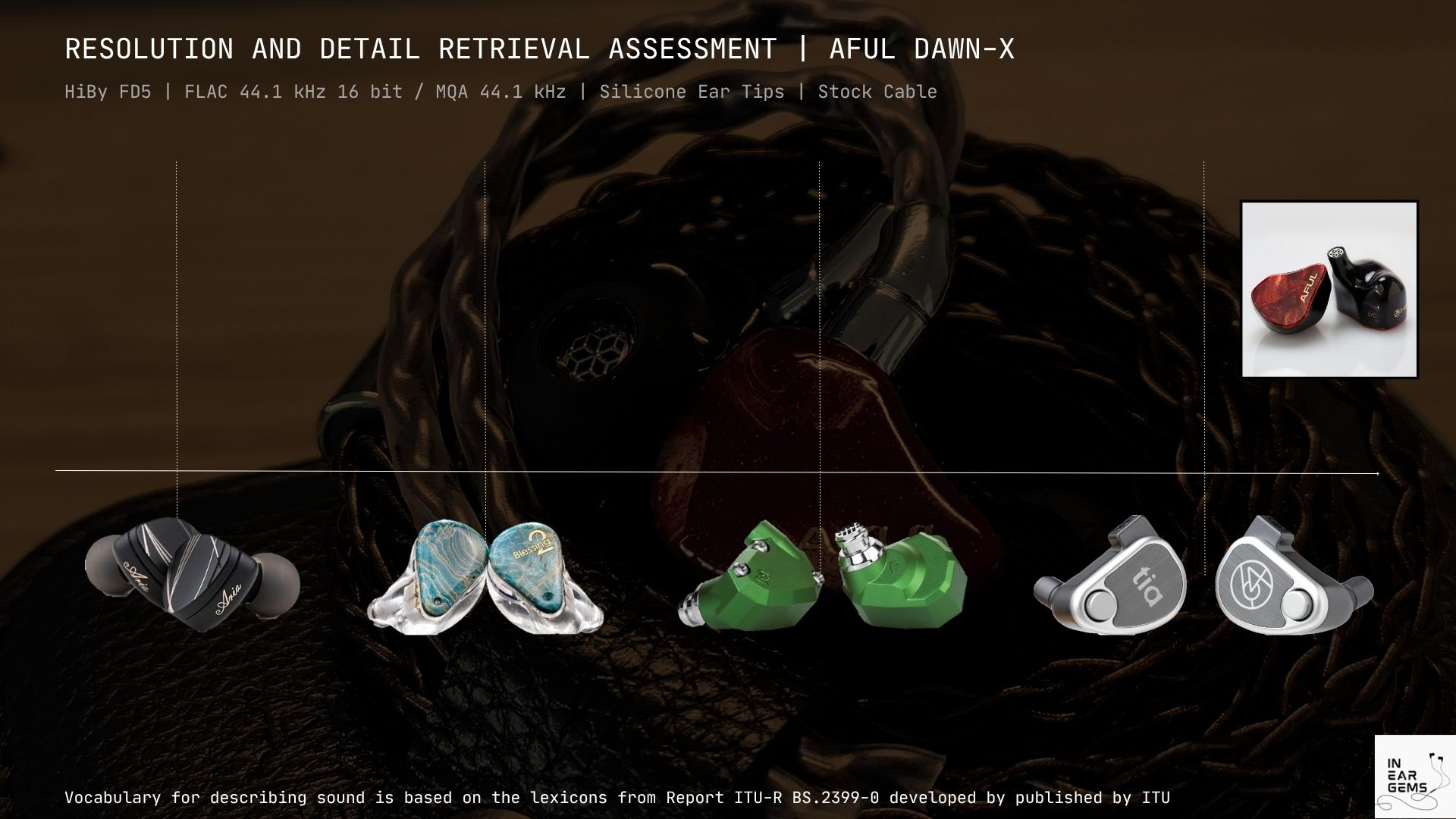
Soundstage and Imaging
The stage of DawnX feels three dimensional and usually conveys an impression that my head is within a bubble of sound, extending outward in all direction.
The illusion of height of the soundstage is very good. Instruments like hi hats and cymbals tend to be positioned slightly above the head in a convincing way.
The foreground elements in the mix (i.e., the ones more emphasized, such as main vocals, main instruments) still upfront and closer to me not buried in the mix or deliberately pushed further away to artificially enhance the illusion of large soundstage. So, because of this, DawnX might feel not as “roomy” as some other TOTL IEMs, but on the plus side, you would not feel that the music is too “distant”.
Thanks to the EST and good upper treble presence, DawnX can still convincingly project the background elements of the track, such as distant choral section or string section further into the environment around me. In some recordings, it feels uncannily real that some parts of the recording actually comes from the surrounding room around me. Maybe the BCD also has a bit of influence in this.
All and all, I find DawnX’s soundstage and imaging exceptional against my standards and reference IEMs. Therefore, I would give DawnX a full 5/5 on this regard as well.
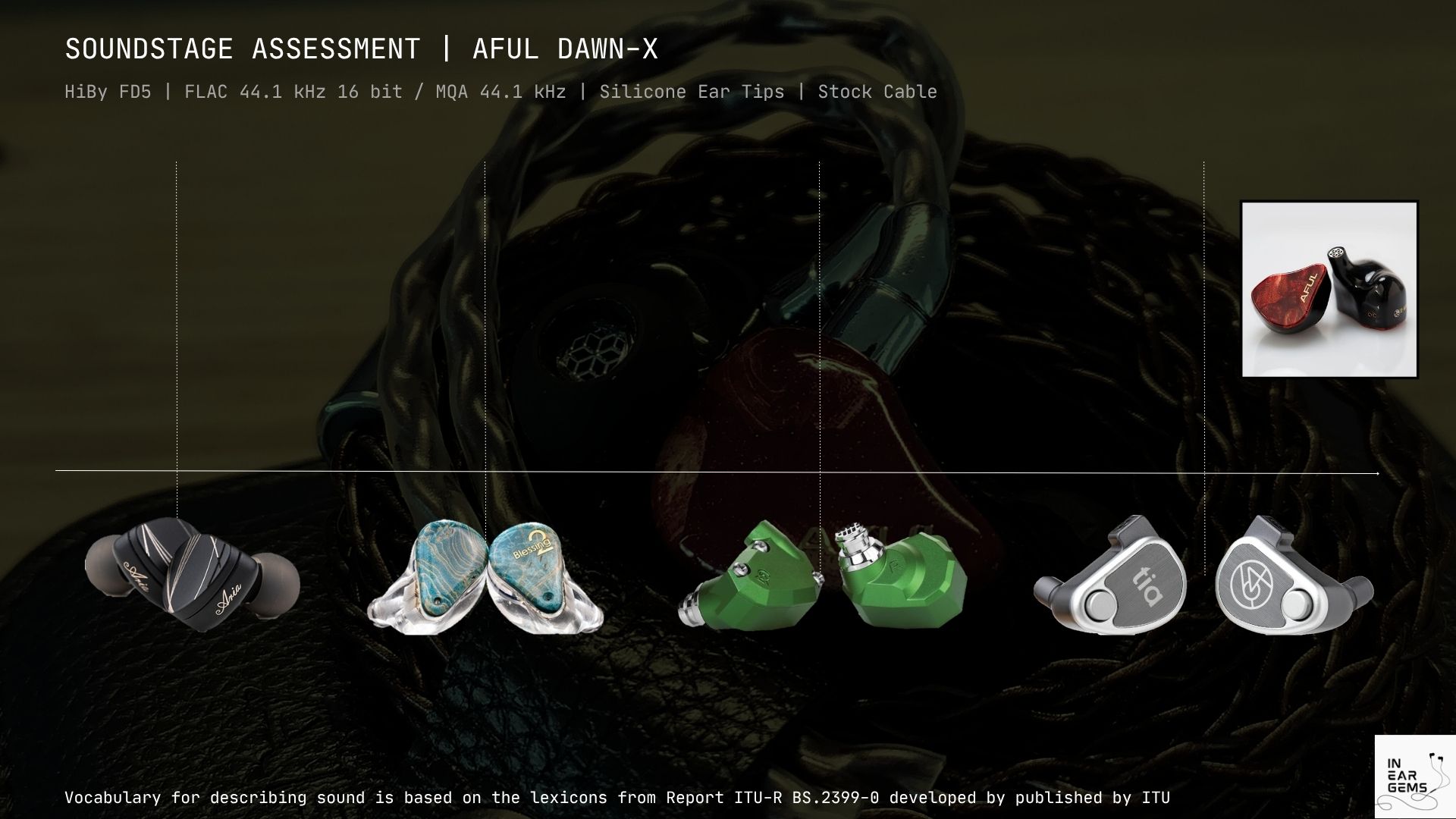
Selected Comparisons
Against AFUL Cantor
It’s a solid step above Cantor on resolution front, and it does so without the sharp, hard edge treble. Separation is more effortlessly, and details in the decay end of the notes and background element are much more audible.At the same time, DawnX tonality feels warmer and richer and the overall presentation feels less aggressive.
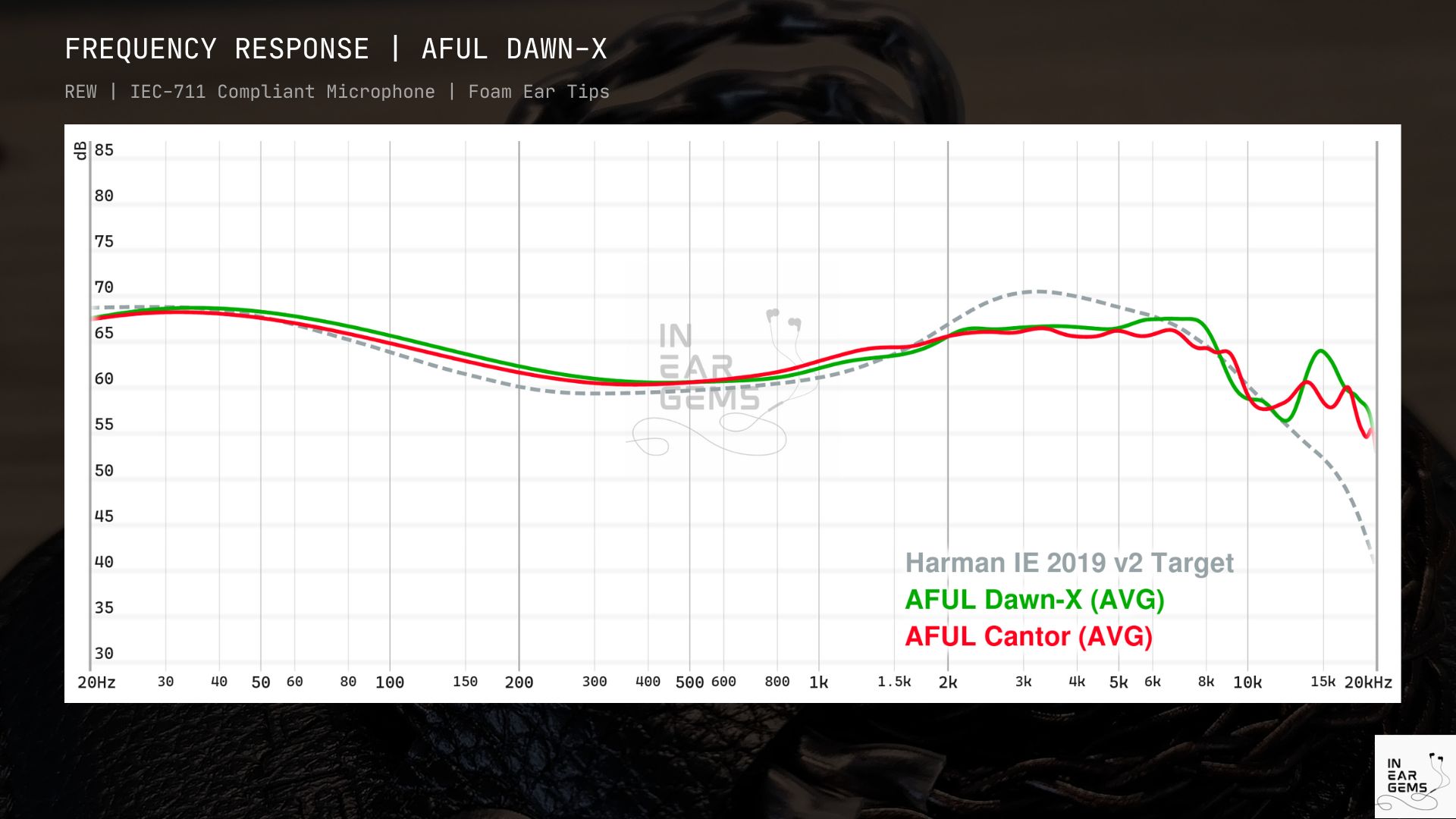
Hard to say which part of DawnX I like the most vs Cantor, but I think the bass is the highlight, followed by the stage, and then resolution. Tonality is not that big of a deal to me in this comparison because AFUL has always tuned their midrange well from day one. This is just continuation of that tuning.
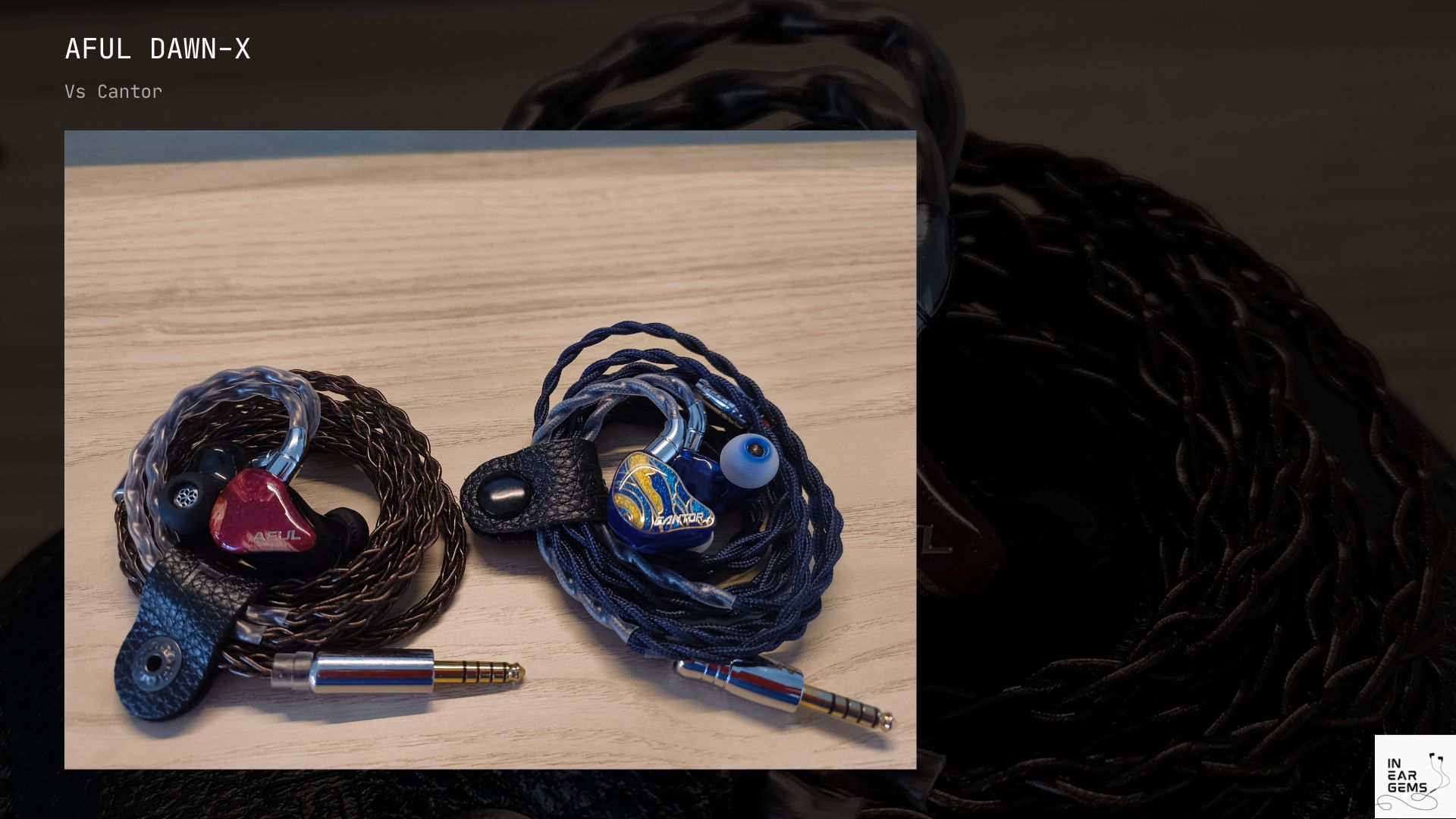
Against AFUL Performer 5+2
Why this comparison? Because I expected DawnX to be a direct upgrade of Performer 5+2 (let’s call it P7 for short)
First thing I notice when A/B DawnX and P7 using my MuseHifi M6 Double DAC on tube mode is how insensitive DawnX is. I need to increase from 10 to 15 volume clicks to have perceptively matching loudness level.
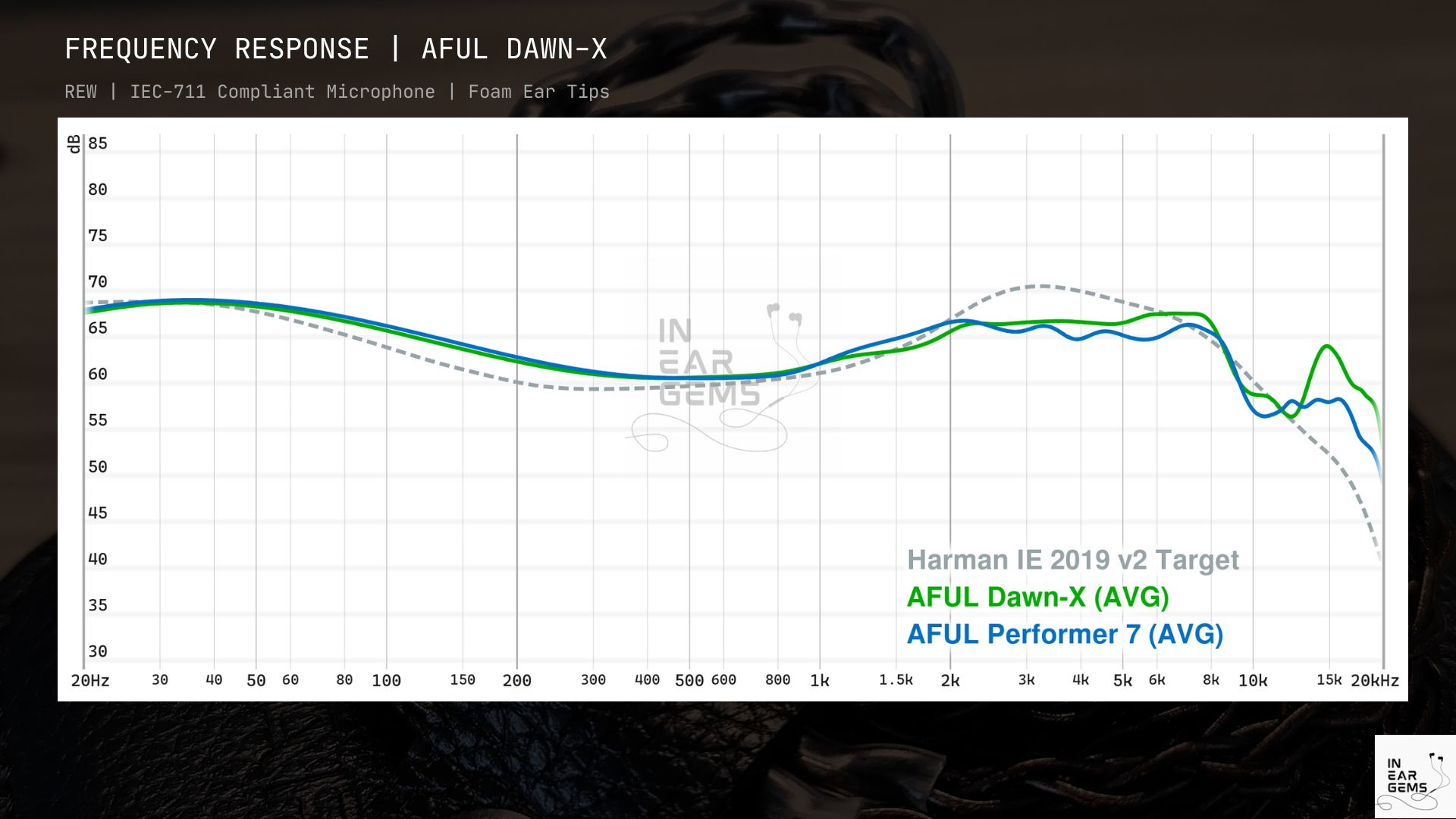
Sonic wise, I would say the tonality and overall tonal balance is quite close. DawnX is much closer to P7 than Cantor on this particular aspect. At the same time, P7 feels significantly more trebly than DawnX.
Technical performance is, unsurprisingly, lean heavily towards DawnX. The flagship IEM is more precise on both micro details, instrument separation, and instrument placement on the virtual soundstage across the frequency spectrum. It’s like moving from a 1080p to 1440p or 4k footage. You can see everything with 1080p, and the footage was quite sharp. But there is just more of that clarity and separation and micro details with the 4k footage. And I need to emphasise that DawnX achieves that information gain without making the sound harsh or piercing in the treble region.
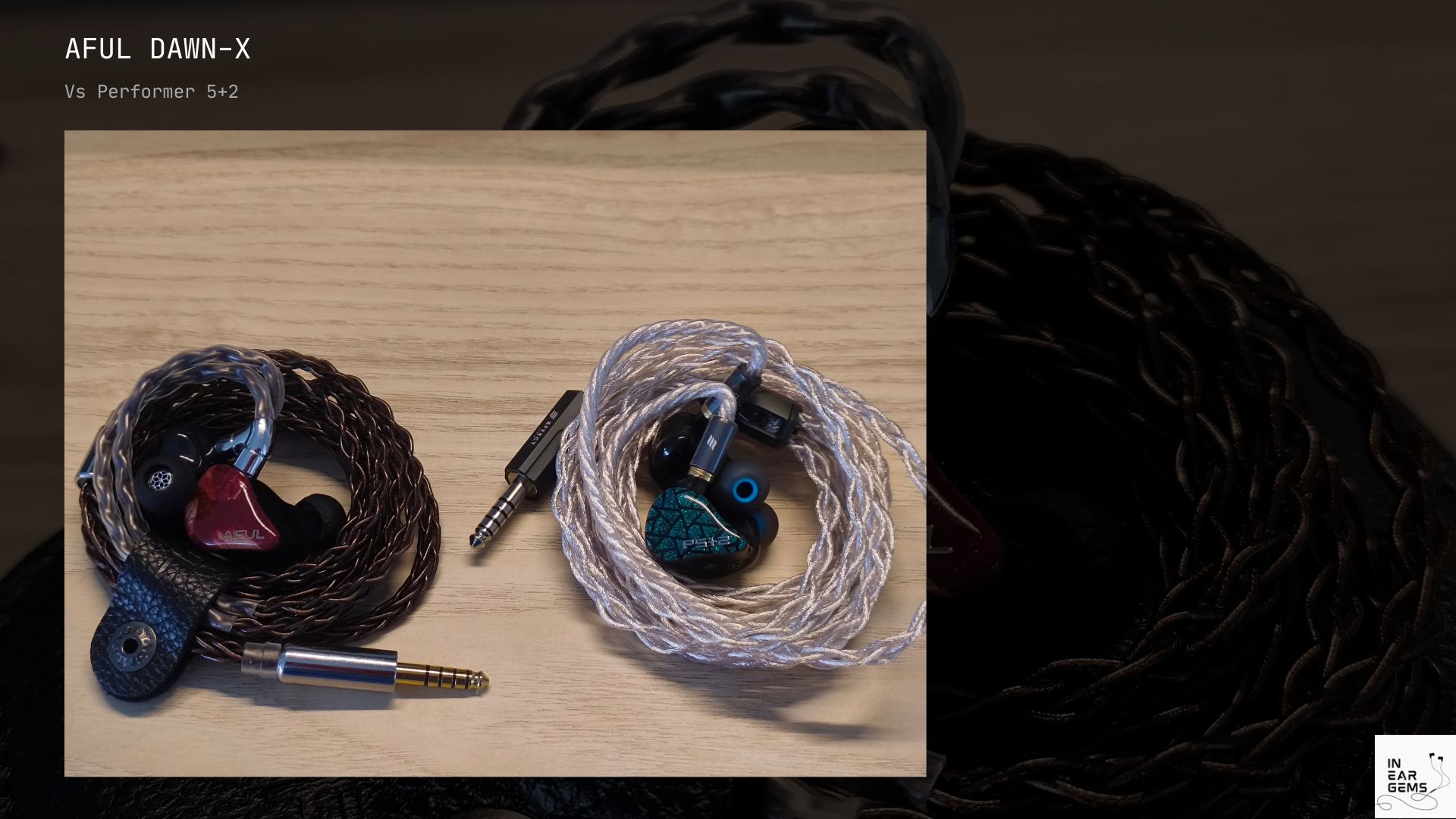
Speaking of treble, I found that treble of P7 feels significantly more “metallic” and harsh, yet revealing less nuances and detail than the 4 EST in DawnX
The stage of P7 does not have that cool “wrap around”, “bubble around head” illusion like DawnX.
Of course, at this point, it’s important to remember that P7 is still the “1080p” footage in this context. It’s not a blurry, low-res IEM.
Against 64 Audio U12T
U12T has been my benchmark for high-end IEM for years. How does it compare against DawnX?
The difference in tonality immediately stands out. DawnX feels like a smooth, cozy, even sound. U12T feels thin and brittle with some female vocal, due to the way its midrange around 1.5khz region is tuned, how it peaks at 2.5kHz and then immediately dip at 3kHz. Whilst U12T sounds fine on its own, it feels hollow and artificial in this direct A/B comparison against both DawnX and P7.
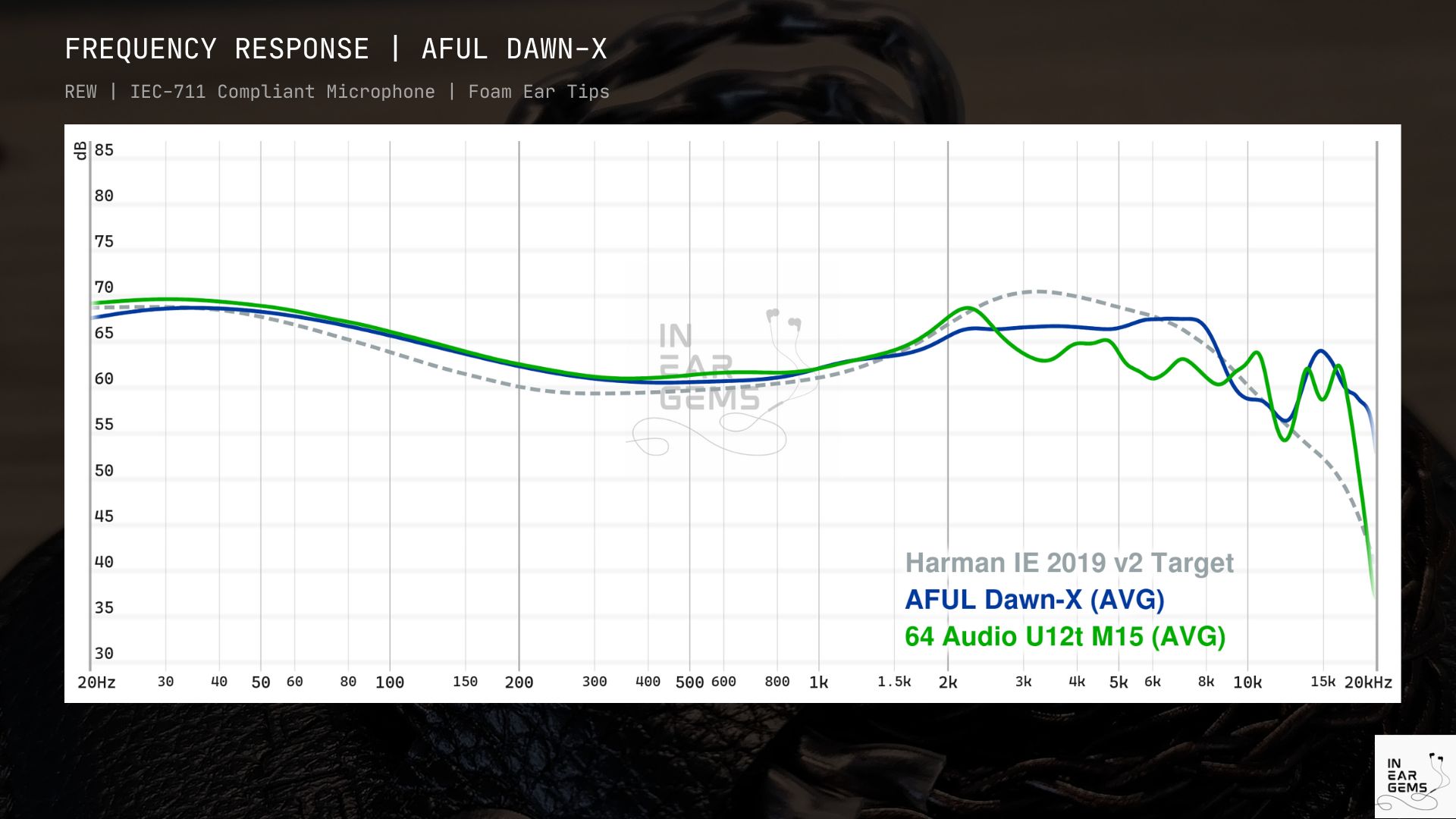
Technical performance wise, I hear better resolution with DawnX. Both U12T and DawnX are quite resolving IEM, so it’s not a big day and night difference, but I found that it is easier to follow different instruments, and I can hear more micro details with DawnX, whilst DawnX treble is smoother and easier to listen than U12T.
The soundstage of DawnX is also more impressive. It conveys the wrap-around effect more clearly, and the distant elements in the mix sound more convincingly distant.
Yes, I think my long-term benchmark IEM has been convincingly surpassed.
Conclusions
So, what do I think about DawnX?
I think it’s an IEM that is easy to like and difficult to hate. It has a low-key presentation that is unlikely to offend, yet it still manages to deliver the technical performance expected from a multi-kilobuck class IEM.
In other words, it’s exactly how I want my “endgame” IEM to be: a general purpose IEM with spot-on tonality aided by top-class technical performance.
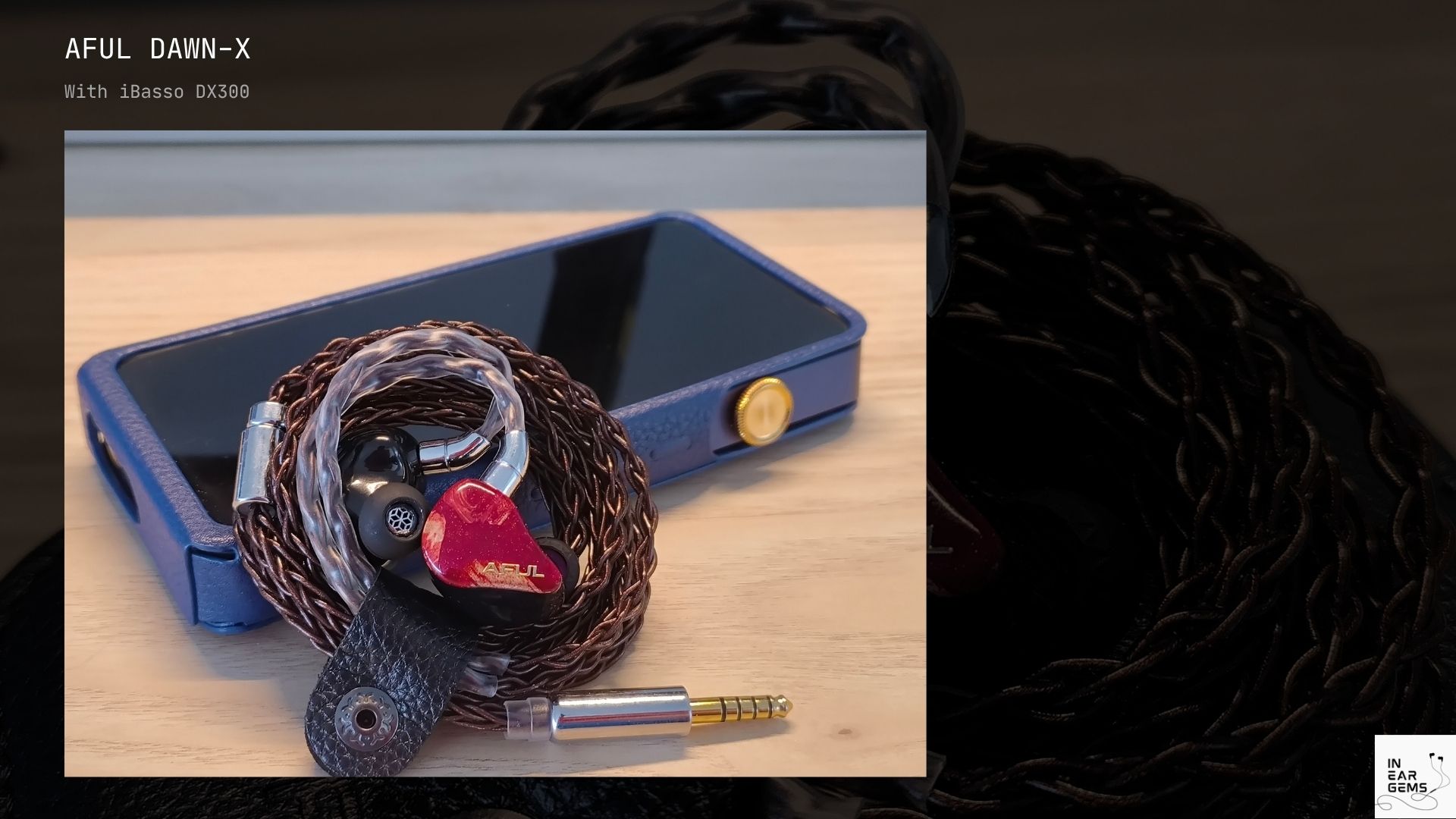
Who should get this IEM?
At $1300, this is a substantial investment in audio gear, so it’s only relevant for those who believe it’s worth the cost. I consider the DawnX a “baby’s first multi-kilobuck” IEM because it offers a safe choice for those wanting to experience this level of performance without the opportunity for extensive auditioning. It’s also suitable for those seeking a multi-functional IEM that works well across different music types and offers top-class technical performance at a smaller (but still rather sizeable) price tag compared to other IEMs of this class.
For experienced audiophiles with a lot of high-end gears already, I’d recommend careful auditioning before getting DawnX, as the more relaxed presentation of this IEM might not satisfy those looking for a more boundary-pushing experience.
What I Like About This IEM
- Neutral-warm tonality with a moderate bass boost
- Low-key presentation that’s easy on the ears
- Impressive micro-detail resolution and instrument separation
- Holographic soundstage with convincing three-dimensional imaging
- Good bass quality with natural resonance and clear note attacks
- Works well across different musical genres
What Could Be Improved
- The fit is less comfortable than previous AFUL models like Cantor and P7
- The design and accessories don’t feel as premium as comparable high-end IEMs
- Bass level is still not at basshead levels despite the 8.5dB boost
- The low-key presentation might not be on-the-edge enough for some listeners
